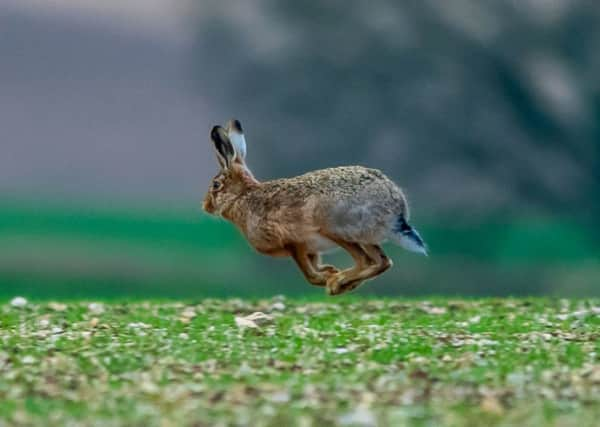Why ‘March hare’ is subject of centuries-old English idiom


The phrase ‘as mad as a March hare’ was reportedly well-enough established for writer John Heywood to include it in his collection of proverbs in 1546 and still it remains in use in the modern day language.
It takes its origins, it is thought, from the energetic and excitable behaviour of hares during their breeding season, giving them rather a ‘mad’ reputation.
Advertisement
Hide AdAdvertisement
Hide AdAccording to Countryfile magazine, in and around March and April, females can be seen fighting off male mating urges, “standing on their hind legs and literally ‘boxing’”.
The March Hare is too, of course, a character in Lewis Carroll’s much-loved Alice’s Adventures in Wonderland.
As Alice prepares to visit him, she says: “The March Hare will be much the most interesting, and perhaps as this is May it won’t be raving mad – at least not so mad as it was in March.”
Advertisement
Hide AdAdvertisement
Hide AdAccording to grassroots movement The Wildlife Trusts, the brown hare, whose scientific name is Lepus europaeus, is at its most visible in early springtime, with the ‘boxing’ period.
“If a fight does happen, the two hares will stand on their hind legs and attack each other with their front paws, pulling out fur,” it says. “This gives the impression of two boxers in a ring.”
It is not just March when brown hares breed though. Rather, it can take place between February and September, charity The Mammal Society says, and a female can rear multiple litters of two to four young per year.
Typically, brown hares favour arable fields, grassland habitats and the edges of woodland and are widespread around Great Britain today.
Advertisement
Hide AdAdvertisement
Hide AdThe animals can sometimes be seen bounding across fields, using their powerful back legs to launch themselves forward.
Here, one is captured on camera with poise on a March day in East Yorkshire as it runs, hops and jumps in a field near Garton on the Wolds.
Technical details: Camera Nikon D5 Lens, Nikon 300mm, with a Nikon 1.4 Teleconverter. Shutter Speed 1/1000sec, Aperture f/5.6, ISO 200.